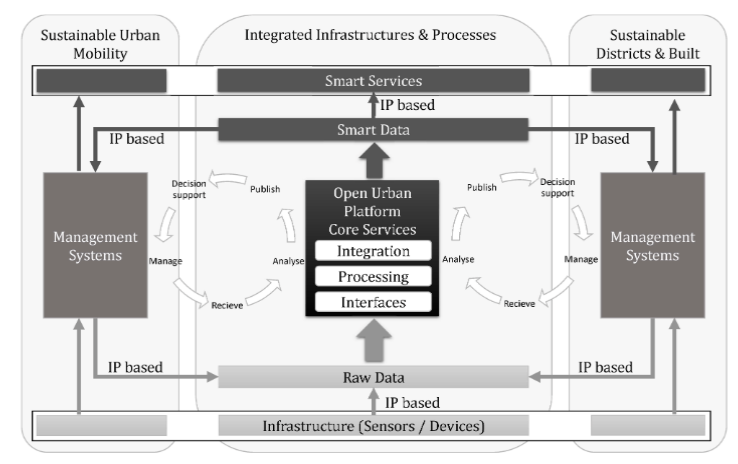Reference Architecture Model Open Urban Platform (OUP)
City Profile / Needs
Referenzarchitekturmodell Offene Urbane Plattform (OUP): DIN SPEC 91357:2017-12
The purpose of the OUP is to serve as a strategic tool for urban planning and digital transformation of urban infrastructures. The OUP achieves this by providing a marketplace for digital data and services, enabling smart services to be deployed, and interconnecting different management systems of urban infrastructures. The benefits of the OUP for urban development include reusing and repurposing existing urban data and services, minimizing investments in service provisioning, and providing data, analytics, and simulation to urban planners for designing and planning the digital transformation of given urban infrastructures.
The DIN SPEC 91357 identifies several key components of the OUP, which are described on page 19. These components include: 1. Data and service providers: These are entities that provide data and services to the OUP. 2. Data and service consumers: These are entities that consume data and services from the OUP. 3. Digital Data & Service Marketplace: This is a platform for exchanging data and services between providers and consumers. 4. OUP Core Services: These are the core functionalities of the OUP, including data management, service management, security management, and user management. 5. Interoperability Framework: This is a set of standards and protocols that enable different systems to interoperate with each other. These components interact with each other in various ways, depending on the use case of the OUP. For example, data and service providers can publish their offerings on the marketplace, which can be discovered by data and service consumers. The OUP Core Services provide the necessary functionalities for managing these interactions securely and efficiently. The Interoperability Framework ensures that different systems can communicate with each other seamlessly, enabling interoperability between different urban infrastructures.
